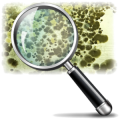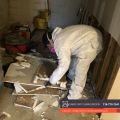Step-by-Step Mold Testing for Residential and Workplace Properties

Mold is a hidden hazard that can affect both residential and workplace properties, posing risks to health, property integrity, and overall indoor air quality. In the Bay Area, coastal humidity and aging buildings increase the likelihood of mold growth, making professional inspection and testing essential. Understanding the step-by-step process of mold testing and how to interpret results can help property owners take proactive action. Certified mold inspector Rick Bruce of Bay Area Mold Pros offers professional mold inspection and testing services to ensure homes and businesses remain safe and mold-free.
Step 1: Initial Visual Inspection
The mold testing process begins with a thorough visual inspection of the property. Rick Bruce examines areas prone to moisture, such as:
-
Basements, crawl spaces, and attics
-
Bathrooms, kitchens, and laundry areas
-
HVAC systems and ductwork
-
Walls, ceilings, and flooring near leaks or water damage
During this step, the inspector looks for visible mold growth, water stains, discoloration, and signs of structural damage. Identifying potential moisture sources is key to understanding where mold may thrive.
Step 2: Moisture Assessment
Moisture is the primary driver of mold growth. Using advanced moisture meters and thermal imaging, the inspector identifies damp areas that may not be visible to the naked eye. This step ensures that hidden mold colonies, often behind walls or under flooring, are detected early. Moisture mapping is especially important in workplaces where water leaks or HVAC condensation can affect large areas.
Step 3: Sample Collection
Professional mold testing involves collecting samples to determine the type and concentration of mold present. Certified inspectors use two main methods:
-
Air Sampling: Captures airborne mold spores to evaluate indoor air quality.
-
Surface Sampling: Collects samples from walls, flooring, or other surfaces suspected of contamination.
These samples are sent to accredited laboratories for analysis. The results help distinguish between normal environmental mold levels and potentially hazardous concentrations that require remediation.
Step 4: Laboratory Analysis
In the lab, samples are analyzed to identify specific mold species and their concentrations. This analysis provides critical information, including whether toxic molds like black mold (Stachybotrys chartarum) are present. Accurate laboratory results form the foundation for informed remediation decisions and help property owners comply with health and safety standards.
Step 5: Reporting and Recommendations
Once analysis is complete, a certified mold inspector prepares a detailed report. Rick Bruce provides written reports that include:
-
· Inspection findings with documented mold locations
-
· Laboratory results detailing mold types and concentrations
-
· Identified moisture sources contributing to mold growth
-
· Professional recommendations for safe and effective remediation
These reports are valuable for homeowners, business owners, and property managers to plan corrective action, support insurance claims, or ensure compliance with workplace safety regulations.
How to Read Mold Testing Reports for Homes and Businesses
Understanding mold testing reports is crucial for taking the right steps toward remediation. Here are key points to consider:
1. Mold Type: Reports list the species of mold detected. Certain molds, such as black mold, may require specialized handling due to potential health risks.
2. Concentration Levels: Laboratory results indicate the number of spores per cubic meter of air or per sample. Higher concentrations may require more extensive remediation.
3. Location of Findings: Knowing where mold was detected helps property owners target remediation efforts and prevent future growth.
4. Moisture Sources: Effective remediation addresses both mold and the underlying moisture issues, such as leaks or high humidity.
5. Recommended Actions: Certified inspectors provide step-by-step guidance on remediation methods, safety precautions, and prevention strategies.
The Bay Area Mold Pros Advantage
For both residential and workplace properties in the Bay Area, professional mold inspection and testing are essential to maintain a healthy environment. Rick Bruce, a certified mold inspector, ensures comprehensive assessments, accurate testing, and reliable reports. By combining technical expertise with detailed documentation, Rick helps property owners address mold risks efficiently and safely.
Request a Professional Mold Inspection Today
Mold testing is not just about identifying growth—it’s about protecting health, maintaining property value, and preventing long-term structural damage. Whether in a home, office, or commercial space, professional inspection and testing provide the evidence needed for effective remediation.
For accurate mold testing and certified reporting in the Bay Area, contact Rick Bruce at Bay Area Mold Pros. His expertise ensures thorough inspections, reliable laboratory results, and actionable recommendations for creating mold-free environments.
Request an inspection today at (650) 762-6228 or visit Bay Area Mold Pros







